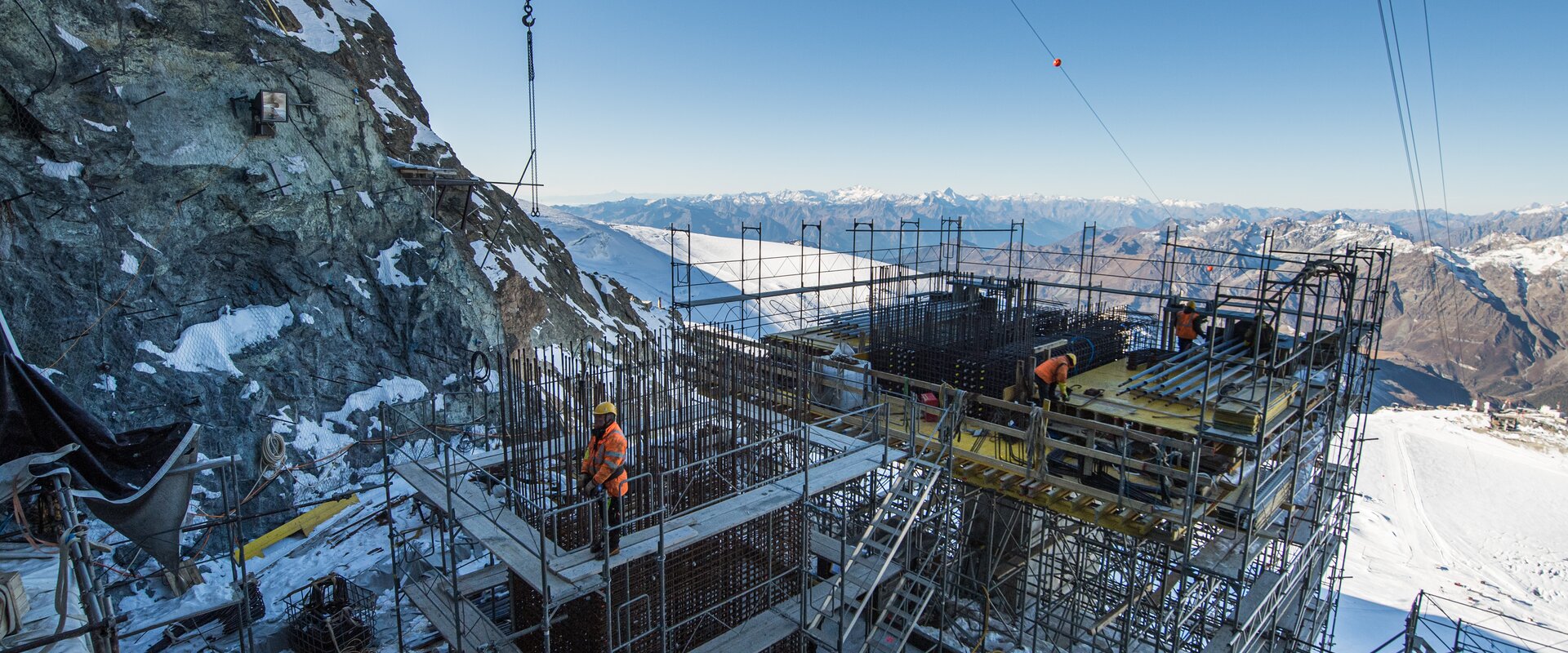



Matterhorn Alpine Crossing
Construction at 4000 metres above sea level
A construction site beyond compare
Realizing the vision of a continuous year-round connection between Zermatt and Cervinia presented the workforce with something of a challenge – carrying out construction work at an altitude of 3883 metres above sea level is no mean feat. There was plenty to be done before the Matterhorn Glacier Ride II could become the last piece in the Matterhorn Alpine Crossing puzzle in July 2023.
The two resorts of Zermatt and Cervinia have harboured ambitions to connect across the Theodul glacier for 80 years. The first part of the continuous link was completed with the opening of the Matterhorn Glacier Ride I in the autumn of 2018, and now the final piece of the puzzle is being put in place with the Matterhorn Glacier Ride II.
Work on the construction sites for the Matterhorn Glacier Ride II began immediately after the opening of the Matterhorn Glacier Ride I. The main difference between the two 3S cableways is that the Matterhorn Glacier Ride II does not require any towers between the mountain and valley stations. This did not make the construction task any easier, however. The altitude and associated weather conditions made the job uniquely difficult. The workforce, averaging around 70 in number, had a constant battle with the wind, snow and extreme fluctuations in temperature, in addition to the difficulties caused by the thin air at almost 4000 metres above sea level. Site manager Anton Lauber said of the major project: “There’s no building site like it anywhere in the world.” The construction of the Matterhorn Glacier Ride II was divided into five phases:
Phase 1: Excavation
The first phase involved excavation work and the removal and blasting of rock so that all the required installation sites could be prepared for the contractor. Much of the excavation work for the Matterhorn Glacier Ride II was actually undertaken during the construction of the mountain station for the Matterhorn Glacier Ride I. It still took nine months to complete the preparations for the station, which was built into the rock. Apart from the lift technology, there was nothing standard in the construction of the two 3S cableways: everything was built to measure. For example, the situation at the site for the valley station meant that the construction pit had to be dug to a depth of 25 metres before solid rock could be reached through the glacial deposit. This was of course no surprise to the client as test drilling had been undertaken in advance.
Phase 2: Installation of the electromechanical lift technology
Phase 2 began on the construction sites in May 2022. This included all the concreting work required to receive the electromechanical components, which were then mounted in position. Even in spring, the conditions were not that much easier: the weather continued to present a major challenge.
Phase 3: Timber work on the valley and mountain stations
With good weather conditions and no further delays it was possible to start the timber work and enclosure of the two stations from the summer of 2022. By the autumn, the mountain and valley stations were almost finished, including the electrical works. In addition, approximately 25 photovoltaic panels were installed during this period, ready to supply a large proportion of the power for the mountain station. To ensure that environmental priorities were given proper consideration, the construction site was supervised and monitored regularly by an environmental building inspector.
Phase 4: Cable winching
The winching of the cable for the new Matterhorn Glacier Ride II was carried out during the winter of 2022/23. Five cables were installed in all – four support cables and the hauling rope. The process took around ten working days for each cable.
Phase 5: Commissioning and final approval
The final step after the finishing processes is the inspection by the Federal Office of Transport. All built, electrical and mechanical elements will be subjected to a meticulous final approval process lasting around a week. On 1 July 2023, the big moment will finally arrive: the Matterhorn Glacier Ride II will go into operation. Passengers from all over the world will be able to travel easily between Zermatt and Cervinia, between Switzerland and Italy, without having to use any means of transport other than the cableway.




